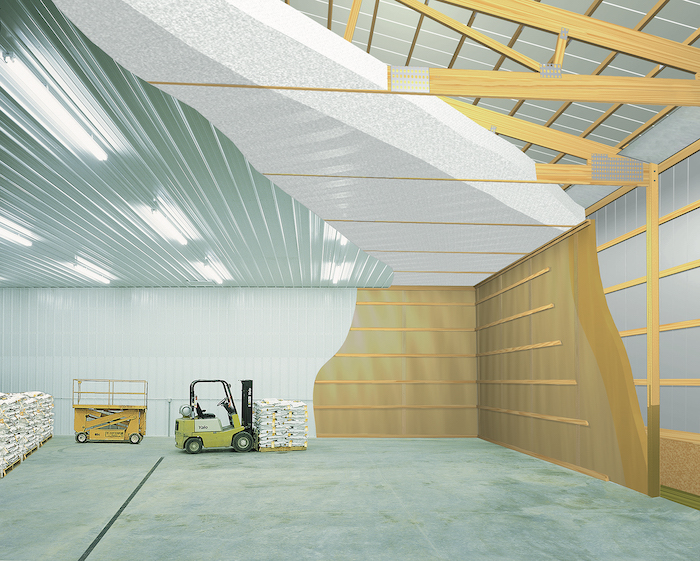If you’re looking to construct a new dealership building, or hear from a customer that they are planning to build a new shop, there are many choices available to move forward with the project. One of those building methods is post-frame construction. Post-frame construction refers to a highly engineered wood-framed structure that can be covered with any exterior.
“When compared to other alternative frame building methods, engineered post-frame systems provide greater structural stability,” states Dan Nyberg, training manager at Morton Buildings, the industry leader in post-frame construction. “Key advantages that have increased over time due to the evolution of post-frame design methods, technology, and advances in construction components. When built correctly, their unique design and construction performs exceptionally well under tremendous weather extremes—an important feature when you live in rural America.”
Below are just some of the advantages that post-frame offers in comparison to other types of construction:
Cost Effectiveness:
Post-frame construction requires limited wall and roof framing materials, and minimal footing and foundation materials. “Wood posts spaced 6 to 8 feet apart with a frame building system means fewer resources than most other construction methods,” states Nyberg. “Post-frame construction site preparation often requires fewer trades and less time. Fewer building components lead to less time for installation labor then those built with other methods. This is because many post-frame building components come prefabricated to the project site.”
Accelerated Construction Time:
On average, it takes experienced post-frame contractors two or three days to erect a basic frame. That includes posts, girts, trusses, and purlins. Delays due to cold weather, even in northerly climates, are minimal. With frame building systems, post foundations can be installed on or below freezing temperatures.
Sustainability:
Post-frame achieves sustainable benefits without prohibitive cost restraints, as it includes many sustainable design aspects by default. As such, incorporating sustainability features require less additional investment than seen by other construction methods. For example, in typical steel buildings, the insulation is draped over the roof purlins and compressed when the roofing is applied. This compression can result in a loss of nearly half of the thickness of the insulation, which reduces the insulation’s R-Value.
Post-frame buildings feature an exceptionally large built-in wall cavity for ample insulation, thereby lowering heating and cooling costs throughout the year. “Where newer energy codes require higher levels of insulation, post-frame is a particularly good option because its walls and roof are relatively easy to insulate,” states Nyberg. “Wide column spacing allows for continuous insulation between structural elements, fewer interruptions in insulation material, and less chance of thermal leakage. Where the insulation is interrupted, wooden structural members have natural insulating properties and conduct less heat than most structural steel or masonry components.”

Post-frame buildings feature an exceptionally large built-in wall cavity for ample insulation, thereby lowering heating and cooling costs throughout the year.
Durability:
A post-frame building forms a tremendously strong structure that efficiently resists wind and seismic forces. Diaphragm building techniques, which dictate how building components work together to transfer lateral loads to the foundation, account for the stability and durability a post-frame building offers across an extended life cycle. Multiple post foundation options are available with a wood-frame system, and each contributes to a building's stability and wind resistance by transferring lateral loads, even for large clear-span buildings in excess of 100 feet.
Versatility:
By design, post-frame buildings provide a wide selection of interior and exterior wood-frame building finishes, roofing products, and architectural details. In fact, just about any kind of wood-frame design aesthetic can be achieved with post-frame construction, making it one of the most flexible frame building systems available.
For more information about the advantages of post-frame buildings, visit www.mortonbuildings.com
For more information about the Morton Foundation System, visit mortonbuildings.com/our-materials/foundation
The Building Repair & Maintenance series is brought to you by Morton Buildings.
Morton Buildings, headquartered in Morton, Illinois, is the industry leader in post-frame manufacturing and construction. At Morton, the difference is in the details. From our cutting-edge innovations and best-in-class warranty, to our craftsmen in the field, we are dedicated to surpassing expectations. Our legacy of excellence in construction spans more than a century and more than a quarter-million satisfied customers. Morton Buildings is 100% employee-owned and proud to be ranked #69 on the National Center for Employee Ownership (NCEO) 2020 Employee Ownership 100 list, which includes the nation’s largest companies that are at least 50% owned by an employee stock ownership plan. For more information, please visit www.mortonbuildings.com.







